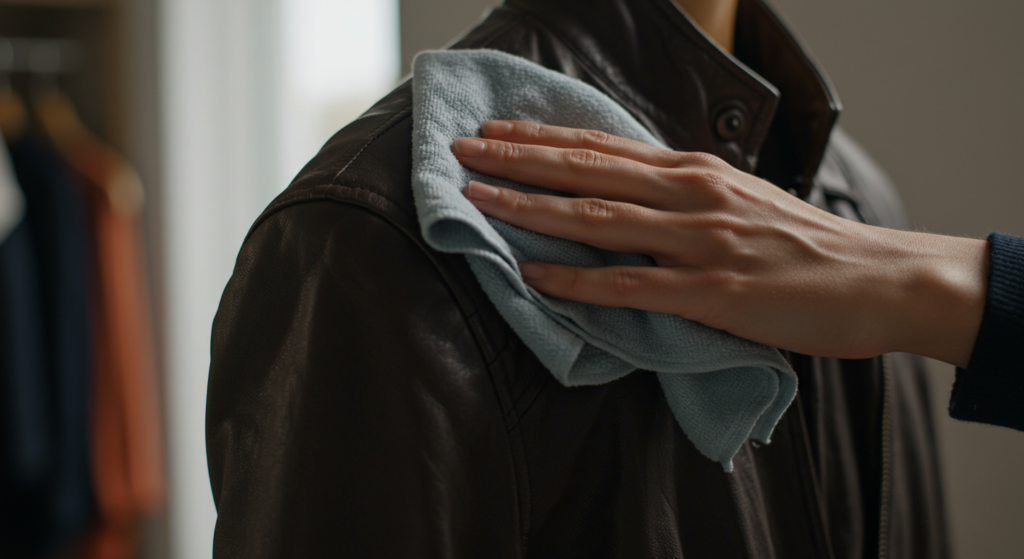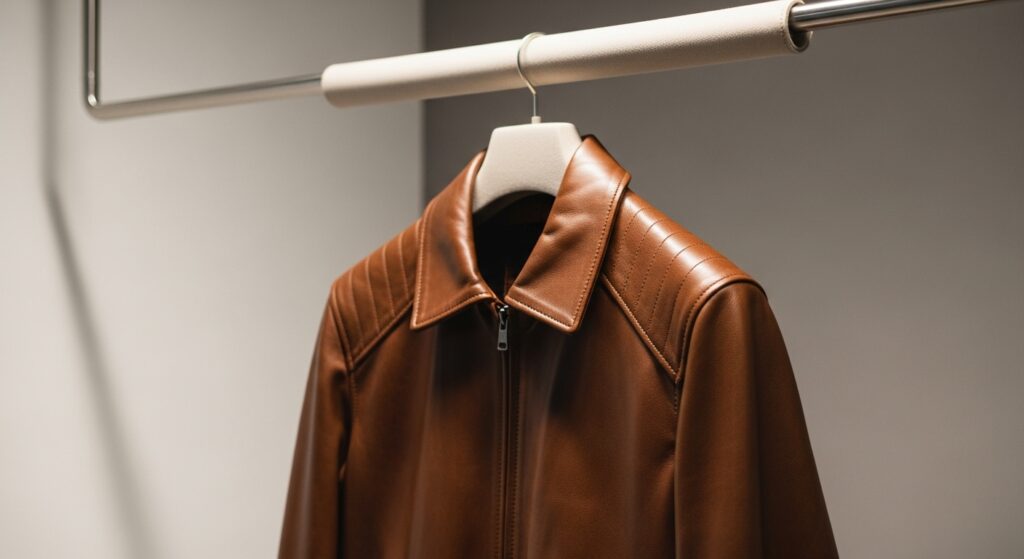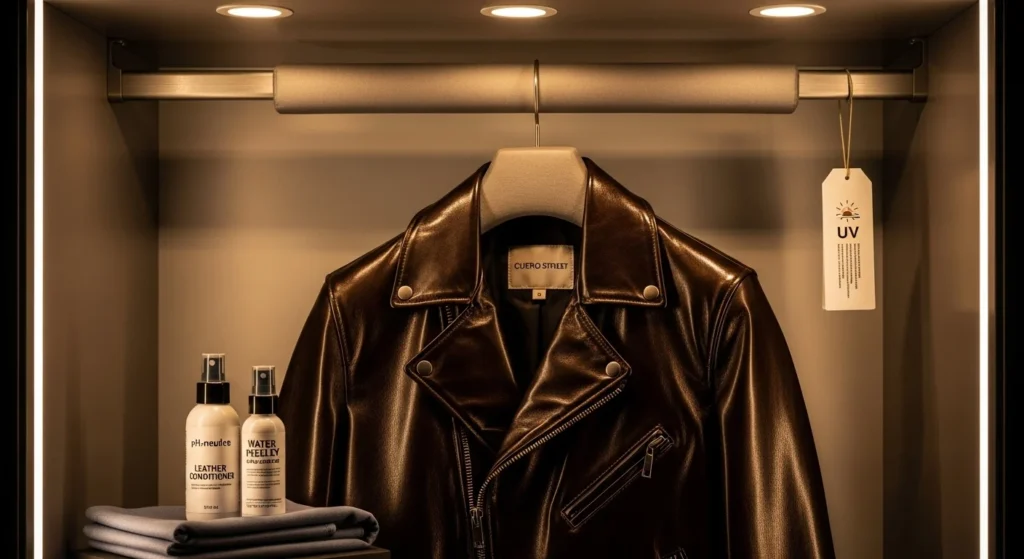How to Care for Leather Jacket: Expert Tips to Preserve Quality, Style, and Longevity
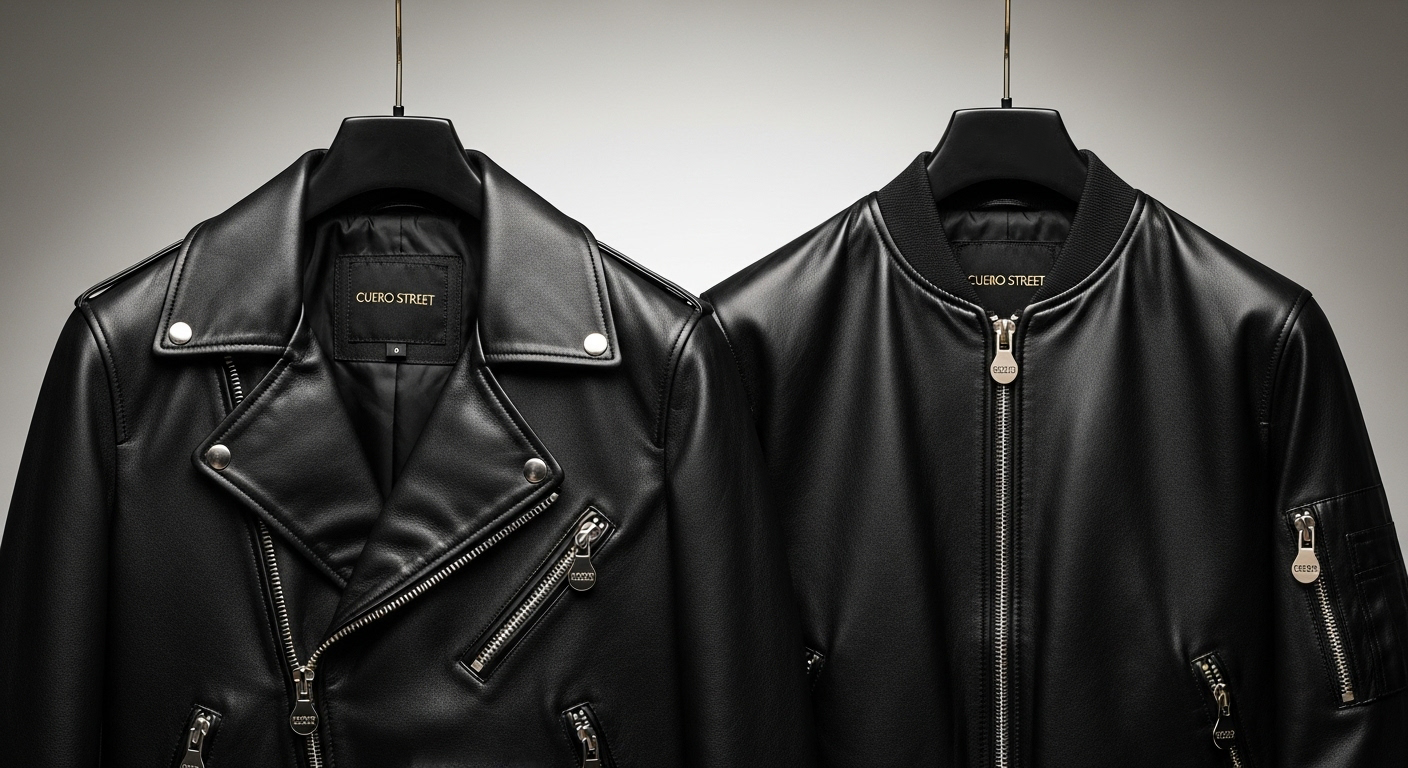
How to Care for Leather Jacket: involves gentle cleaning, regular conditioning, protecting from water and sun damage, and correct storage. Softening and breaking in new jackets improves comfort. With consistent maintenance, quality leather jackets can last for decades, preserving both their look and durability.
Care for Leather Jacket
Leather jackets are timeless wardrobe staples known for their durability and style. However, to keep that sleek look and supple feel, proper care and maintenance are essential. Whether you’ve invested in a premium goat leather jacket or a classic cowhide, understanding how to care for leather will save you money and preserve your jacket’s legacy for generations.
The difference between a leather jacket that ages gracefully and one that deteriorates prematurely lies entirely in how it’s maintained. Proper care transforms leather from a simple garment into a lifelong companion that develops character and beauty over time. This comprehensive guide will teach you everything you need to know about preserving your investment and ensuring your leather jacket remains a cornerstone of your wardrobe for decades to come.
Why Leather Jacket Care Matters
Leather is a natural material that ages beautifully when cared for correctly but can dry out, crack, or fade without proper attention. Unlike synthetic materials, leather is essentially preserved animal skin that retains many characteristics of living tissue. This means it requires specific care to maintain its flexibility, appearance, and structural integrity.
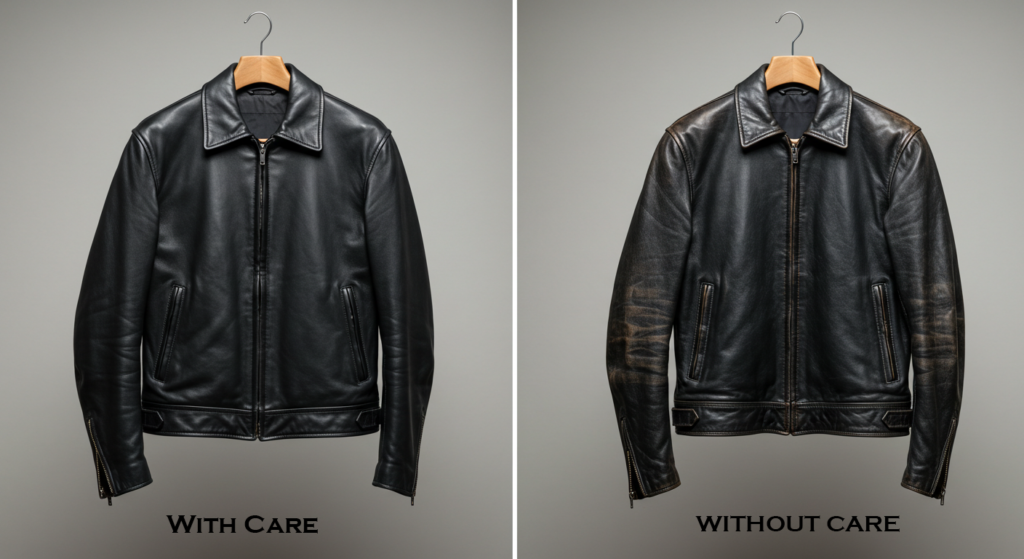
Dirt, oils, moisture, and sunlight all impact the leather’s texture and color over time. Body oils from regular wear can build up and create dark patches, while environmental pollutants can embed themselves in the leather’s pores. Maintaining your jacket’s quality means protecting it from these elements and treating it with the respect that natural materials deserve.
The financial aspect cannot be overlooked either. A quality leather jacket represents a significant investment, often costing hundreds or even thousands of dollars. Proper care extends the life of this investment exponentially, making the cost-per-wear incredibly reasonable over time. Well-maintained leather develops a unique patina — a natural aging process that enhances the material’s character and makes it truly one-of-a-kind.
Understanding Different Types of Leather
Before diving into care techniques, it’s crucial to understand that different types of leather require slightly different approaches:
Full-Grain Leather: The highest quality option that retains the complete grain layer and develops beautiful patina over time. Naturally more resistant to wear but requires regular conditioning.
Top-Grain Leather: Slightly processed to remove imperfections, making it softer initially but requiring more frequent conditioning to maintain appearance and flexibility.
Corrected-Grain Leather: Heavily processed with artificial grain patterns, requiring gentler cleaning products and more frequent protective treatments.
Suede and Nubuck: These require specialized care products and techniques, as their napped surface is more delicate than smooth leather finishes.
Understanding your leather type helps you choose appropriate care products and techniques that will enhance rather than damage your jacket’s unique characteristics.
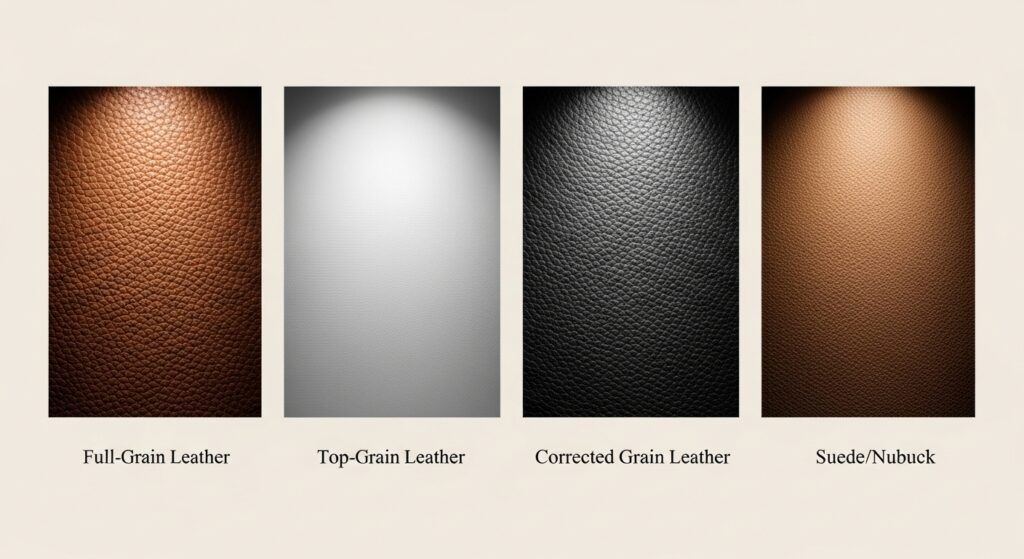
How to Clean a Leather Jacket
Proper cleaning forms the foundation of leather jacket maintenance. Regular cleaning prevents the buildup of dirt, oils, and environmental contaminants that can permanently damage the leather’s surface.
Basic Surface Cleaning
Start with the basics: use a soft, damp cloth to wipe away surface dust and dirt. Work in gentle, circular motions and avoid applying excessive pressure. For weekly maintenance, this simple step prevents the accumulation of particles that can work their way into the leather’s pores.
Deep Cleaning for Stains
For stains, use specialized leather cleaner — avoid harsh detergents or household chemicals, which can strip natural oils and cause irreversible damage. Never soak your jacket or use excessive water, as this can cause shrinking, warping, or water stains. Apply cleaner to a cloth first, then work it into the leather in small sections. Always spot test cleaners on an inconspicuous area before full application.
Cleaning Techniques by Stain Type
Oil Stains: Absorb excess oil immediately with a clean cloth. Sprinkle cornstarch or talcum powder on the stain and let it sit overnight. Brush away gently and assess if further treatment is needed.
Water Spots: Allow to dry naturally, then gently buff with a soft cloth. If spots remain, light conditioning may help restore uniform appearance.
Salt Stains: Mix equal parts white vinegar and water, apply with a soft cloth, and immediately wipe with a damp cloth to remove residue.
Cleaning the Lining
Cleaning the inside lining is equally important, especially with regular wear. Body oils, perfumes, and sweat can build up, creating odors and potentially staining the leather from inside. Use mild soap diluted in water and gently dab with a cloth, avoiding oversaturation. Let it air dry fully before wearing again, ensuring complete moisture evaporation to prevent mold or mildew growth.
Conditioning: The Key to Soft, Supple Leather
Leather needs moisture just like skin, and conditioning is perhaps the most critical aspect of leather jacket maintenance. This process replenishes natural oils that prevent cracking, stiffness, and premature aging.
Choosing the Right Conditioner
Select a high-quality leather conditioner appropriate for your specific leather type. Mink oil works well for rugged, work-style jackets, while lighter conditioners are better for fashion-oriented pieces. Avoid products containing petroleum or silicone, which can clog pores and prevent natural breathing.
Application Technique
Apply conditioner every 3 to 6 months, depending on wear frequency and climate. Use a small amount — less is more with leather conditioning. Rub it evenly with a soft cloth, working in circular motions and paying extra attention to areas that flex frequently, such as elbows and shoulders.
Allow the conditioner to penetrate for the recommended time (usually 15-30 minutes), then buff away any excess with a clean cloth. Over-conditioning can make leather overly soft and prone to stretching, so stick to recommended frequencies.
Dry climates require more frequent conditioning, as low humidity draws moisture from leather more quickly. Conditioning also helps restore color uniformity and provides a slight protective layer against future stains and moisture.
How to Soften a Leather Jacket
How to Care for Leather Jacket: New leather jackets often feel stiff and uncomfortable initially. This stiffness is natural and indicates that the leather hasn’t been over-processed, which is actually a good sign for long-term durability.
Natural Breaking-In Process
Softening happens naturally as you wear the jacket, as body heat and movement gradually relax the fibers. You can speed up this process through gentle conditioning and by flexing the leather manually. Gently bend sleeves and work shoulders to encourage flexibility without forcing it.
Accelerated Softening Techniques
For faster results, wear your jacket for short periods initially, gradually increasing wear time. Body heat and natural movement are the best softening agents. Try gentle stretching exercises while wearing the jacket, such as reaching overhead or rotating shoulders.
Avoid forcing folds or bending sharply, which can cause permanent creases or stress marks. Never use heat sources like hair dryers or direct sunlight to speed softening, as these can cause cracking and permanent damage.
Protecting Your Leather Jacket
Water and sun are leather’s biggest enemies, capable of causing immediate and long-term damage that can be expensive or impossible to repair.
Water Protection
While most modern jackets have some water resistance, prolonged exposure can cause stains, shrinkage, or permanent darkening. Use a leather-specific waterproofing spray for added protection, but always test it first on a small, inconspicuous section to ensure it doesn’t alter the leather’s appearance.
Apply waterproofing treatments in thin, even coats, allowing complete drying between applications. Reapply seasonally or according to manufacturer recommendations.
Sun and Environmental Protection
Avoid direct sunlight for extended periods, as UV rays fade colors and dry out natural oils, leading to cracking and brittleness. When not wearing your jacket, store it away from windows and direct light sources.
If your jacket gets wet, air dry it at room temperature in a well-ventilated area. Never use heaters, hair dryers, or direct flames. Stuff the sleeves with acid-free tissue paper to maintain shape while drying, and ensure complete drying before storage.
Protect your jacket from chemicals, including household cleaners, perfumes applied directly to the leather, and automotive fluids, which can cause permanent staining or chemical damage.
Proper Storage Techniques
Storing your jacket properly prevents wrinkles, mold, and structural damage during periods of non-use.
Hanging and Support
Use a wide, padded hanger to maintain the jacket’s shape and distribute weight evenly across the shoulders. Wire hangers can create permanent creases and distort the shoulder line. Wooden hangers are ideal, as they help absorb excess moisture while providing adequate support.
Storage Environment
Hang your jacket in a cool, dry, and well-ventilated area with consistent temperature and humidity. Avoid basements, attics, or other areas prone to temperature fluctuations or high humidity. Ideal conditions include temperatures between 60-70°F and humidity levels around 45-55%.
Long-Term Storage
Avoid plastic bags or covers, which trap moisture and encourage mildew growth. If you won’t wear your jacket for extended periods, consider a breathable garment bag made from cotton or canvas. These protect from dust while allowing air circulation.
Before long-term storage, clean and condition the jacket thoroughly. Check on stored jackets periodically, and consider wearing them occasionally even during off-seasons to maintain flexibility.
Breaking In Your Leather Jacket
Breaking in a leather jacket enhances both comfort and fit, creating a personalized garment that molds to your body’s unique contours.
Wear your jacket often but avoid overdoing it in harsh weather during the initial break-in period. Start with short periods and gradually increase wear time as the leather becomes more flexible. This gradual approach prevents stress damage and ensures even breaking-in.
Condition the jacket regularly during the break-in period, as increased flexibility helps the conditioner penetrate more effectively. Be patient — quality leather will gradually mold to your body for a personalized fit that becomes more comfortable over time.
The break-in period typically lasts 2-4 weeks of regular wear, depending on the leather type and thickness. Full-grain leathers may take longer but will develop superior character and durability.
How Long Do Leather Jackets Last?
With consistent care, a quality leather jacket can last decades and often becomes more beautiful with age. Many vintage leather jackets from the 1950s and 1960s remain fully functional and highly desirable today, testament to leather’s incredible durability when properly maintained.
Factors Affecting Longevity
Leather quality, construction methods, and care consistency all impact lifespan. Full-grain leather jackets with quality construction can easily last 20-30 years or more with proper maintenance. Even moderately priced jackets can provide 10-15 years of service with consistent care.
Signs of Aging vs. Damage
Learn to distinguish between desirable patina and concerning damage. Natural aging includes slight color variations, softening, and the development of character marks. Damage includes cracks, tears, permanent stains, or structural issues like separated seams.
Address minor issues promptly to prevent them from becoming major problems requiring expensive restoration or replacement.
Pros and Cons of Leather Jacket Ownership
Understanding both the advantages and challenges of owning leather jackets helps you make informed decisions and set realistic expectations for maintenance and care.
Pros:
Exceptional Durability: Quality leather jackets can last 20-30 years or more with proper care, making them excellent long-term investments despite higher upfront costs.
Timeless Style: Leather jackets never go out of fashion. Classic styles remain relevant across decades, ensuring your investment stays stylish regardless of changing trends.
Unique Aging Process: Unlike synthetic materials, leather develops character through wear, creating a personalized patina that makes each jacket unique and often more beautiful over time.
Versatile Styling: From casual streetwear to sophisticated evening looks, leather jackets adapt to various style contexts and seasonal layering needs.
Natural Protection: Leather provides excellent wind resistance and moderate water protection, making it functional outerwear for various weather conditions.
Investment Value: Well-maintained vintage leather jackets often retain or increase in value, particularly designer or rare pieces.
Cons:
High Maintenance Requirements: Regular conditioning, careful cleaning, and proper storage demand time and attention that synthetic alternatives don’t require.
Weather Limitations: Heavy rain and extreme temperatures can damage leather, requiring alternative outerwear options for harsh conditions.
Initial Stiffness: New leather jackets require break-in periods that can be uncomfortable initially, unlike immediately comfortable synthetic options.
Cost Considerations: Quality leather jackets require significant upfront investment, plus ongoing costs for proper care products and occasional professional cleaning.
Storage Demands: Leather needs specific storage conditions and quality hangers, requiring more closet space and attention than regular garments.
Stain Vulnerability: Certain stains can permanently damage leather, requiring immediate attention and sometimes professional intervention.
Professional Care and Restoration
While regular home maintenance handles most needs, professional services become valuable for deep cleaning, restoration, or addressing specific problems.
Consider professional services for significant stains, structural repairs, or color restoration. Professional leather specialists have access to specialized equipment and products not available to consumers.
Research local specialists and ask about experience with your specific jacket type. Quality services aren’t cheap, but they can restore jackets that might otherwise be unsalvageable.
Conclusion
Taking care of your leather jacket is an investment in style, durability, and personal satisfaction. By cleaning gently, conditioning regularly, protecting from environmental damage, and storing properly, you’ll keep your jacket looking sharp and feeling great for years to come.
Remember that leather jacket care is not a one-time task but an ongoing relationship with a natural material that responds to attention and care. The time you invest in maintenance will be repaid many times over in extended wear life, improved appearance, and the satisfaction of owning a garment that truly improves with age.
Quality leather jackets represent more than clothing — they’re expressions of personal style, investments in durability, and often become treasured possessions passed down through generations. With proper care, your leather jacket will develop its own unique character while providing decades of reliable service and style.
If you want to explore high-quality, durable leather jackets crafted with care, visit Cuero Street’s collection. Experience the blend of premium leather and timeless style built to last with proper maintenance and care.

